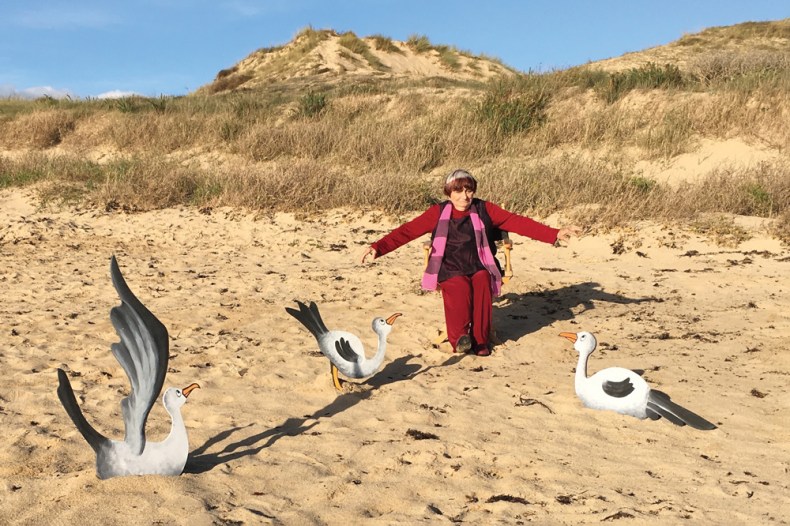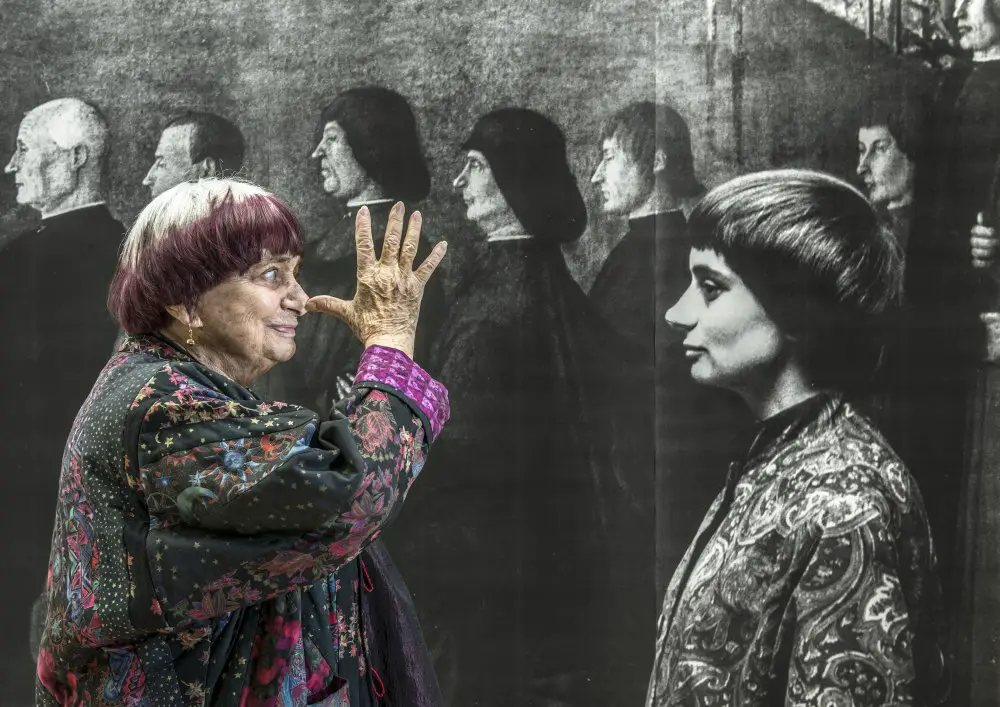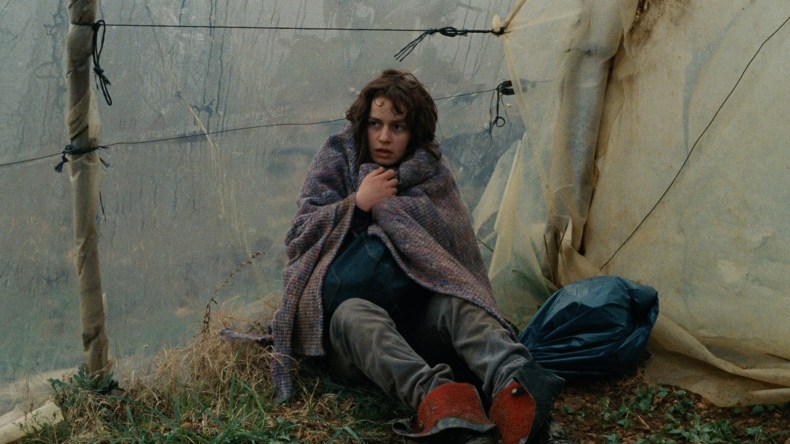Agnès Varda , who passed away in 2019 at the age of 90, was a well-known figure in French cinema for over 50 years. She had a distinctive bowl cut and a small stature, living in a pink house on a cobbled street in Paris. While she was celebrated as a quirky and beloved personality, she was also recognized as a groundbreaking female director and a unique artist. Varda excelled in a style of filmmaking that blended real and imaginary elements, known as docu-fiction.
This year has seen a significant recognition of her contributions. Laure Adler wrote the first major biography of Varda, and there were events at Arles showcasing her still photographs. An exhibition at the Academy Museum of Motion Pictures in Los Angeles features her work until January 2025, and ‘Viva Varda!’ is currently on display at the Cinémathèque française until the end of January.
Exhibition
The exhibition starts with Varda’s photographs, reflecting her early interest in street scenes and unconventional shapes. In 2021, her family donated all her photographic negatives to the Institut pour la photographie in Lille, allowing the public to see some of this material. The photos include Varda’s unique perspective, capturing street scenes and even her own pregnant body.
The exhibition also highlights two of Varda’s major film successes: “Cléo from 5 to 7” (1962) and “Vagabond” (1985). The former was nominated for the Palme d’Or at Cannes, while the latter won the Golden Lion in Venice and achieved box office success in France, selling over a million tickets. Varda’s daughter Rosalie, a costume designer on many of her mother’s films, curated the exhibition, contributing items such as Sandrine Bonnaire’s beaten-up leather jacket from “Vagabond,” which is displayed in perfect condition behind a glass case, complete with creases and a little pin and green thread still attached to the lapel.
Life Details Of Agnès Varda
In the late 1960s, Agnès Varda lived in Los Angeles with her husband, fellow director Jacques Demy. The exhibition highlights this period with a red color theme, symbolizing Varda’s focus on left-leaning movements. During this time, she made documentaries about the Civil Rights and feminist movements in the United States. The exhibition features works like “Jane B. par Agnès V.” (1988), a film about Jane Birkin that combines an intimate portrait with sketches where Birkin portrays various fictional and mythological characters, as well as figures from classical paintings and even a flamenco dancer. Another notable piece is Varda’s tribute to Demy, titled “Jacquot de Nantes” (1991), a fictionalized account of his childhood released a year after his death from AIDS.

Agnès Varda Documental
The documentary film “The Gleaners and I” (2000) is given its own section in the exhibition, rightfully acknowledging its role in significantly raising Agnès Varda’s profile outside France. The film explores the practice of gleaning, focusing on collecting leftover produce after harvesting, particularly potatoes from a newly dug-up field. However, the documentary goes beyond this subject, as showcased by a clip in the exhibition.
Varda reflects on her first experience shooting with a handheld digital camera, contemplating how it changed her relationship with images. She takes a broader perspective on gleaning, placing it in historical context and juxtaposing her footage with artistic depictions by painters like Millet and van Gogh. Additionally, modern forms of gleaning, such as foraging in bins and abandoned crates in city streets, are explored.
The exhibition space at the Cinémathèque features film clips on flat screens with loud soundtracks, surrounded by walls covered with materials like film excerpts, photographs, letters, press cuttings, and context provided by curators. The atmosphere is bustling and a bit messy, reminiscent of Varda’s own pink-painted house and her sociable and creative nature. While not unpleasant, this environment encourages a specific type of engagement with her work, lacking the quiet contemplation it may require.
The final room, however, provides a welcome contrast. Instead of a static timeline with dates and key events, a montage is projected on the wall, spanning several meters. It displays photos and video clips from Varda’s life related to feminism and women in cinema. This montage reveals a more complex story than expected from the filmmaker who, in 1954, made “La Pointe Courte,” the first feature of the French New Wave.
The footage includes Varda, at the age of 82, leading a silent protest by actresses and female directors at Cannes in 2018, criticizing the festival’s gender bias in awarding the Palme d’Or. Interviews from earlier decades also depict Varda as an independent spirit, not necessarily waving the feminist flag, and not always as fun and lovable as in her later documentaries. Understanding this complexity is crucial to doing justice to her work.
Google Doodle On Agnès Varda

On December 13, 2023, Google honored Agnès Varda with a special Doodle on its homepage. The vibrant and animated Doodle celebrated a significant event: Varda’s reception of the Honorary Lifetime Achievement Award from the European Film Academy on the exact same date in 2014.
Click Here
30 seconds remaining
FAQ's
- When and where was Agnès Varda born?
- Agnès Varda was born on May 30, 1928, in Ixelles, Brussels, Belgium.
- Where did Agnès Varda's family move when she was 12 years old?
- Her family moved to Sète, France, when she was 12 years old.
- What did Agnès Varda study at the beginning of her educational journey?
- Varda initially delved into art history at the prestigious École du Louvre.
- Which school did Agnès Varda attend to pursue her interest in photography?
- Varda studied photography at the École des Beaux-Arts.
- What was Agnès Varda's early career path before entering filmmaking?
- Initially aspiring to become a museum curator, Varda worked as a still photographer, including family and wedding photography.
- In 1951, what prestigious position did Agnès Varda receive in the world of theater?
- Jean Vilar, a close friend, offered Varda the prestigious position of official photographer at the Théâtre National Populaire.
- What was Agnès Varda's debut film, and in what year was it released?
- Agnès Varda's debut film was "La Pointe Courte," released in 1954.
- Which film by Agnès Varda is considered groundbreaking for the New Wave aesthetic?
- "La Pointe Courte" (1954) is considered groundbreaking for introducing the New Wave aesthetic with its raw realism.
- Name two films by Agnès Varda that focus on the experiences of women.
- "Cléo from 5 to 7" (1961) and "One Sings, the Other Doesn't" (1977) are two films that spotlight the experiences of women.
- What is Agnès Varda's legacy beyond filmmaking?
- Agnès Varda's legacy extends beyond filmmaking; she was also a photographer, sculptor, and an advocate for artistic freedom and social justice. Her creativity continues to inspire artists worldwide.




1 thought on “Agnès Varda Complete Details and Why Google Put It’s Doodle To Celebrate The French Screen writer”